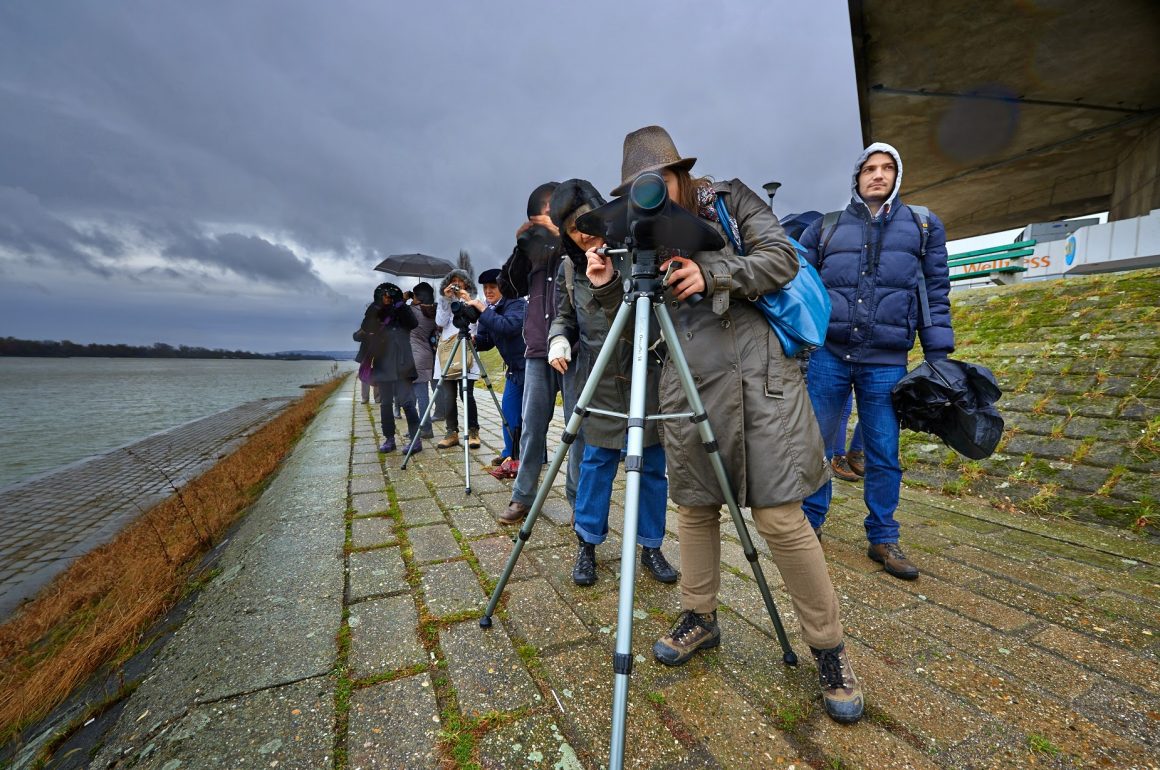
In Belgrade, Serbia, winter months offer surprisingly good birding possibilities. Winter is a season of extremes – opt for the very top and the very bottom of the city.
Woodpeckers and finches
The top of the city would be the highest peak of the Avala Mountain Reserve (511 m / 1700 ft above sea level), with the Memorial to the Unknown Hero and overgrown with firs and pines. The peak also has a different, harsher climate than the slopes. And that harsher, mountainous climate attracts some northern guests to overwinter, as well as birds that come down from Serbian mountains to spend the winter in somewhat lower and more hospitable areas, such as Avala. Although many of them can be found in city parks, too, at the top of Avala your chances are higher.
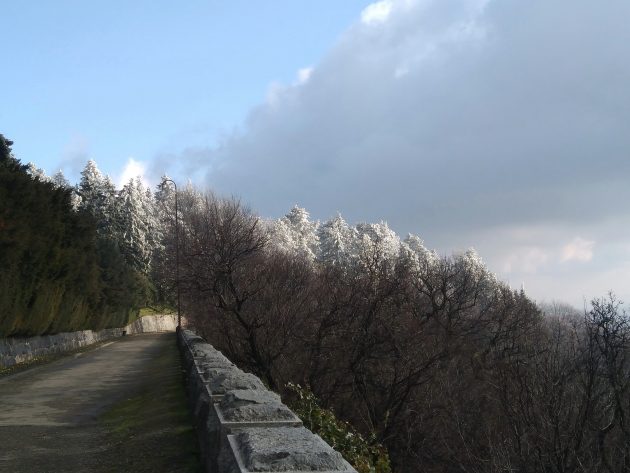 Photo Snezana Panjkovic
Photo Snezana Panjkovic
The species you should pay attention to are the woodpeckers, Middle and Lesser Spotted Woodpeckers, Eurasian Green, Grey-headed and Black Woodpeckers among them, Short-toed Treecreeper, Goldcrest, Marsh Tit; in winter joined by Eurasian Treecreeper, Firecrest, Bullfinch, Coal Tit, Mistle Thrush, sometimes together with rarities such as Common Crossbill, Ring Ouzel or Alpine Accentor.
There’s one lane, one-way road going up and down the mountain. Otherwise, the foothills (bus stop “Avala”) are reachable by city buses 401, 403, 405, 407 and 408. Also, to warm yourself after birding, there are two restaurants at the top.
Ducks and divers
The bottom of the city is, naturally, the lowest point or course of the Danube (around 74 m / 240 ft above sea level), the best area being the confluence of the Sava and the Danube, around the War Islands Reserve. That is where two mighty river currents collide and the flow slows down, depositing sediments, which in winter offers favourable feeding conditions for numerous ducks, while divers (loons) usually choose deeper waters of the waterway. Two more aspects contribute to bird diversity: these are the inner city waters, so hunting is forbidden, and the Danube rarely freezes, and even then it would be the last water to freeze. And so, there the birds are, in the middle of the city.
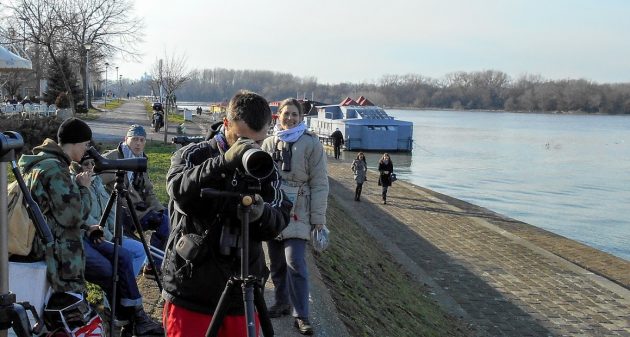
The best places to watch are the quay by the May 25 Sports Centre (officially the Bank of Major Gavrilovic; above and cover), Usce Park (officially, Friendship Park), the side with a view of Konjska ada and the junction of the Danube river arm with the Sava.
Already recorded this winter are Black-throated Diver, Goosander and several Greater Scaups, together with Ferruginous and Tufted Ducks and the regulars, Common Goldeneye, Caspian Gull, Pygmy Cormorant and White-tailed Eagle. Other species expected in December include Velvet Scoter, the last flocks of Common Cranes, perhaps a Red-breasted Merganser, Long-tailed Duck or a Smew (if the winter gets cold), as well as the still missing Red-throated Diver.
The quay by the May 25 Sports Centre is easily accessible by city buses 79 & 24. To warm yourself after birding, there are several cafes along the banks (some floating and obstructing the view, some on the bank).
Raptors, pipits and shrikes
If there is no ice, Beljarica (some December birding here), a spacious floodplain of the left bank of the Danube, north of the Pupin’s Bridge and less than 10 km / 6 mi up the Danube from the Sava River mouth, is an exciting place to bird.
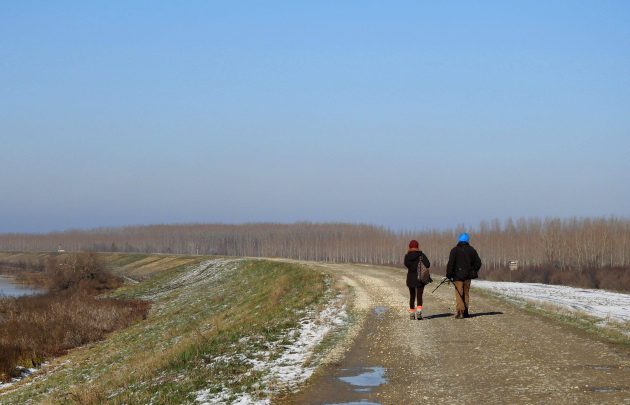 Photo Miroslav Mares
Photo Miroslav Mares
Usually there would be numerous Great Egrets, ducks and cormorants, Hen and Western Marsh Harriers, an extrovert Eurasian Sparrowhawk, possibly a more introvert Northern Goshawk too, half a dozen to a dozen White-tailed Eagles (three breeding pairs, plus numerous immature birds). Also, a rare Greater Spotted Eagle was spotted here in December (only about a dozen of them overwinter in Serbia). Other notable species are Great Grey Shrike, Eurasian Tree Sparrow, Water and Meadow Pipits, flocks of Bramblings, Hawfinches and Yellowhammers…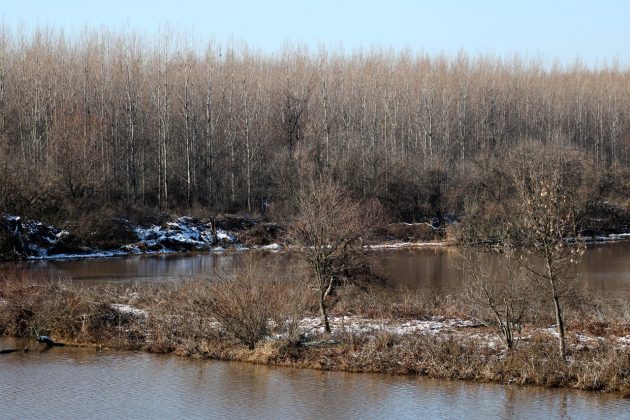 Photo Zorana Nikodijevic
Photo Zorana Nikodijevic
The easiest access is by car from the Zrenjanin Road, through Kovilovo suburb (which is reachable by city bus 106). Park at the beginning of the route (driving along the levee is prohibited and the barrier is often closed and locked), but at the side – be sure not to block heavy lorries full of poplar trunks. Bring a thermos of coffee and a flask of some fire water, there’s nowhere to hide from the elements.
Yes, other species easier to spot in winter include the Long-eared Owl and the Peregrine, but I am not going to discuss their whereabouts openly.
Cover photo: brutalist architecture of the May 25 Sports Centre by Sasa Preradovic













Leave a Comment